What can we expect now that China's 'zero-Covid' is no more
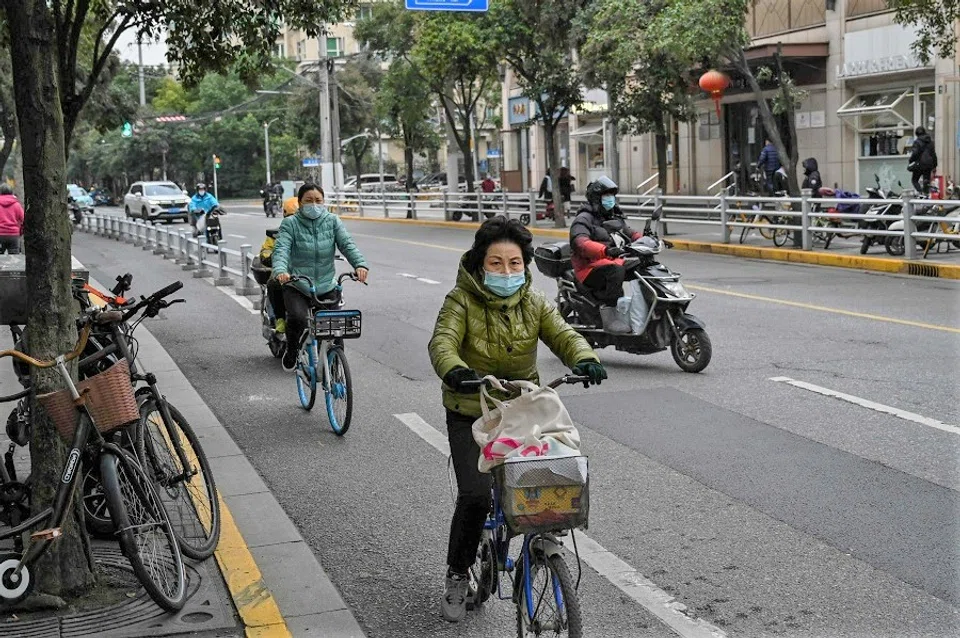
(By Caixin journalists Xu Wen, Jiang Moting, Cui Xiaotian, Liu Denghui, Zhao Jinzhao and Han Wei)
It was the 25th day that Guangzhou resident Fang Yuan had been confined to her home under lockdown when she was disturbed by a loud noise. A cacophony of machinery and clearance work erupted to break the silence that had settled over the neighbourhood after isolation barricades had gone up weeks earlier as Covid-19 raged across the city and much of China.
Surprised by the commotion, Fang looked out her window and was astonished at what she saw: the red barricades were being torn down.
It was Wednesday, 30 November, which will most likely go down as the day that China's central government finally relented and began shifting away from its almost three-year-long hyper-restrictive "zero-Covid" policy that at times saw hundreds of millions under some form of lockdown.
Unlike most of the rest of the world, which has learned to live with the virus, China had been doggedly sticking with its strict zero-Covid measures including snap lockdowns and city-wide Covid-19 testing in the hopes of stamping out community transmission. But now all that seems to have changed in the span of just a couple of days.
... the about-face came as suddenly as the most recent lockdowns had begun.
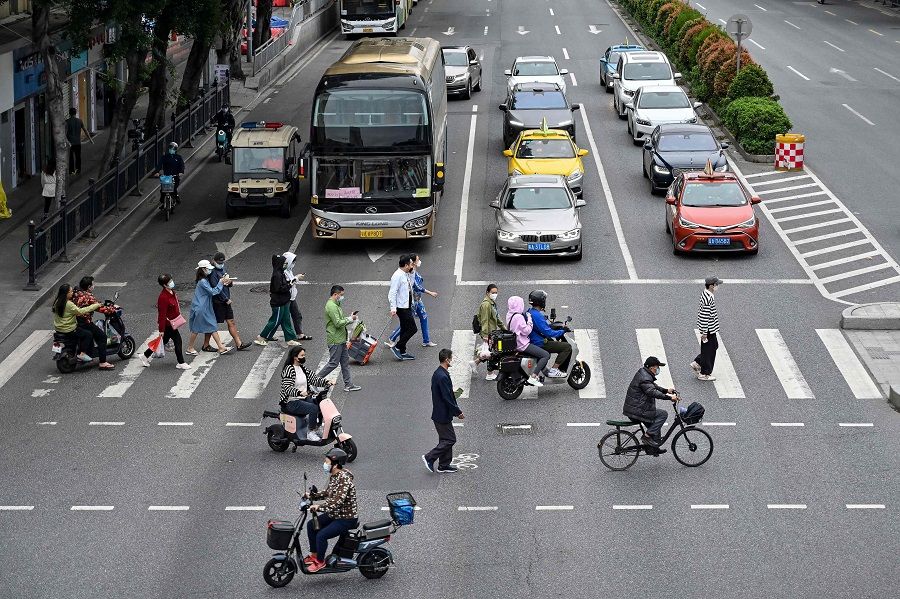
In the end, the about-face came as suddenly as the most recent lockdowns had begun. For 26-year-old Fang, who was born and raised in Guangzhou and is accustomed to the noisy city streets in the metropolis of nearly 19 million people, everything seemed to come to a stop on 5 November.
It was on that day when the Haizhu district in the south of the city where Fang lives, was suddenly locked down due to a surge of infections. Six days later, barricades were installed across main roads linking the district to the outside world and most residents were ordered to remain inside their homes. Several neighbouring districts also imposed strict movement controls.
Lockdowns were enforced as Guangzhou was - and still is - among the hardest hit cities in China's latest wave of Covid-19 outbreaks, the worst since the pandemic started. The city has recorded more than 150,000 cases since late October with daily tally currently hovering above 6,000.
But even as cases remained high, the government felt compelled to act in contrary to its previously unbending commitment to stamping out infections wherever they sprang up with hard lockdowns and mass testing.

Perhaps it was the undeniable damage it was doing to the economy, which, excluding the 2020 dip during the first year of the pandemic, is expected to grow at the slowest pace in almost four decades in 2022, or the hundreds of millions whose livelihoods were being throttled. Or maybe it was the public's frustration that was beginning to reach breaking point.
'Life' returns
Whichever specific factor proved to be the final straw, time was up on zero-Covid and on the afternoon of 30 November, Guangzhou took the lead with several districts announcing that they would lift most restrictions and reopen businesses. In response, people left their homes to watch and celebrate the removal of barriers that had sealed them in. Bars and restaurants reopened and customers flooded in.
"It feels like life is coming back," said Fang.
The seismic shift in policy was abrupt, even catching municipal officials unawares. Caixin has learned that the Guangzhou government was discussing continued efforts to eliminate the virus under zero-Covid on the morning 30 November, but then received a new pandemic directive from provincial authorities. Just hours later, the city announced the end of the lockdowns.
Guangzhou was not alone. On the very same day, right across China a number of major cities including Shenzhen, Chongqing, Chengdu, Shenyang, Zhengzhou and Beijing also declared an easing of certain Covid-19 controls, such as ending community lockdowns, allowing businesses to reopen and halting mass nucleic acid testing.

Then, late on the night of 30 November, state media quoted Vice-Premier Sun Chunlan, who is the top official overseeing zero-Covid's enforcement, as saying that China's battle against the virus "is facing new circumstances that come with new tasks" as the Omicron variant becomes less pathogenic.
It appeared the government was providing the scientific justification for the U-turn on zero-Covid.
"Hong Kong's experience proved that lockdowns are no longer a decisive measure to control the pandemic when infections remain high. The crucial task is to protect the elderly who are more vulnerable to the virus." - Jin Dongyan, virologist at the University of Hong Kong
At a meeting with the National Health Commission (NHC), Sun went further, urging more efforts to optimise the country's virus response by improving diagnosis, treatment and quarantine measures, boosting the immunisation of the entire population, particularly the elderly, and preparing more medical resources. She didn't once mention zero-Covid.
Experts agreed with the change in stance. Jin Dongyan, a virologist at the University of Hong Kong, said Hong Kong's experience proved that lockdowns are no longer a decisive measure to control the pandemic when infections remain high. The crucial task is to protect the elderly who are more vulnerable to the virus, he said.
"If the elderly are safe, society is safe," said Jin.
The change in rhetoric from the very top level of government and easing control measures in major metropolises sent a clear signal that China was pivoting from zero-Covid.

However, there were earlier signs a course correction was on the cards. The NHC on 11 November released "20 measures" aimed at "optimising" the country's Covid-19 response, a move seen as relaxing the harsher of the restrictions. Some localities acted in accordance with the new guidance, but quickly reversed course as cases continued surging.
Perhaps sensing the message wasn't getting through to regional officials, many of who had gone to extreme lengths to ensure zero-Covid had been strictly enforced, on 29 November, the Communist Party-backed newspaper People's Daily published a commentary calling for "serious implementation" of the central government's recent Covid-19 policies, while avoiding a "one-size-fits-all approach" and "excessive measures".
Also on 29 November, the Joint Prevention and Control Mechanism of the State Council issued a directive, urging local governments to speed up vaccination of the elderly. This call was seen by many as a preparation for reopening as the comparatively low vaccination rate of the nation's elderly, a group most vulnerable to serious illness and death if infected, had been a constant roadblock to lifting restrictions.
But for China to comprehensively revamp its Covid-19 control regime and fully reopen, some daunting challenges remain. These include reshaping public perception of the virus, expanding vaccinations for vulnerable groups and preparing enough medical resources to deal with an expected surge in patients.
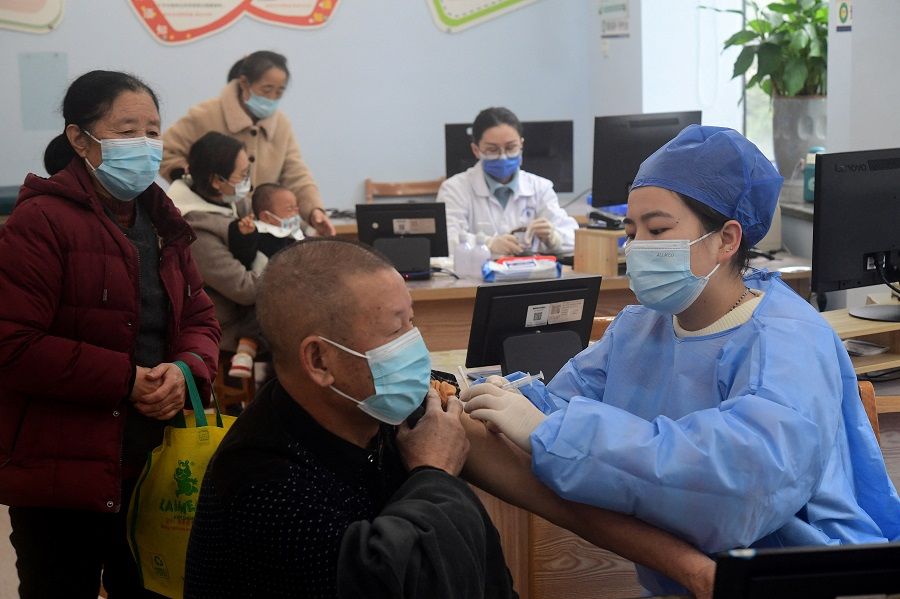
China should guide its people to move from passively implementing virus control rules to proactively taking "proper protective measures", said Lu Jiahai, a senior expert at the National Medical Products Administration (NMPA), the state drug regulator.
"It is better to direct the flood than block it," said Lu.
Proper measures will most likely include relying less on mass nucleic acid testing, with the time-consuming requirement becoming a part of daily life for of hundreds of millions of people across the country.
RATs on the rise
Nucleic acid testing played an indispensable role for China to bring the virus under control, but mainly for earlier variants before delta that were more lethal, said Lu. As Omicron has become the dominate strain, the testing method should also be adjusted to increase the level of precision in controlling spread of the virus, he said.
Nationwide changes to the testing regime have gathered pace since 30 November, when Beijing said it would make virus testing more targeted at people at higher risk of infection. Days earlier, Guangzhou and Zhengzhou also said people who are largely homebound and don't frequently move around outdoors would not be required to take the tests.
Several cities also stopped requiring nucleic test results from the previous 48 hours for people wanting to enter public venues.
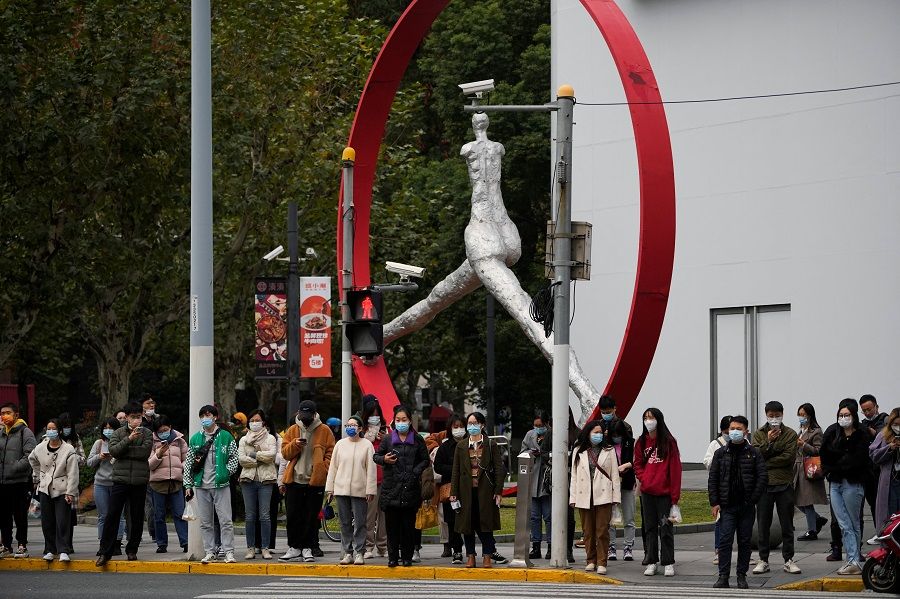
Health experts have suggested that China increase the use of rapid antigen test kits (RATs) so people can self-administer the tests at home. Already widely used around the world, RATs were approved in China in March only as a supplement to nucleic acid testing.
But their use is now on the rise, with cities such as Guangzhou encouraging local residents to stock up on testing kits at home. A person from an antigen test kit producer told Caixin that the Beijing municipal government has placed larger orders and required them to ensure stable supplies.
Quarantine requirements are also being loosened. Authorities in Beijing, Guangzhou and Chongqing said certain people such as the elderly, patients with chronic illnesses, pregnant women and parents with young children will be allowed to isolate at home instead of centralised quarantine sites.
Making the switch to home isolation will shift much of the burden of controlling the virus onto communities and ease the pressure on the state-run healthcare system.
Home quarantine for less risky contacts had been written into China's latest version of Covid-19 control playbook released in June, with the 20-measure policy package released early last month further relaxing requirements. But in practice, most people deemed to be an exposure risk were still sent to government sites for centralised quarantine by local authorities.
But on 27 November, Guangdong governor Wang Weizhong became the first official to publicly support broadening home quarantine for eligible people. Then yet again on the pivotal day of 30 November, cities including Guangzhou, Shenzhen and Chongqing issued rules to allow close contacts of Covid-19 patients who meet certain criteria to isolate at home.

Making the switch to home isolation will shift much of the burden of controlling the virus onto communities and ease the pressure on the state-run healthcare system.
Indeed, localities embraced home quarantine partly out of fear the rising cases would overwhelm quarantine facilities. Between 22 October and 28 November, Guangzhou reported over 143,000 new infections, including 11,920 people that required hospitalisation and 96,490 under medical observation.
As of 17 November, the city had a total of 240,000 beds in makeshift hospitals and quarantine sites for Covid-19 patients and close contacts, but some of them were still under construction, according to government data.
Li Tong, an infectious disease doctor at Beijing You'an Hospital, said clearer home isolation standards and accompanying guidelines should be prepared to assist with implementation at the community level.
Better communication
Clarity on the new policy will be a welcome change as it was a lack of communication as well as haphazard and heavy-handed implementation of pandemic restrictions and lockdowns that has fueled public frustration.
Beijing resident Zhang Qi was angered when she received a notice from the community committee on 25 November saying the entire neighbourhood would be locked down for three days starting that evening. Prior to that, only one building had been sealed after a Covid-19 case had been found.
"Is this an excessive measure? Can I complain? Does the community committee have the right to do this? Is the notice legally binding?" said Zhang.
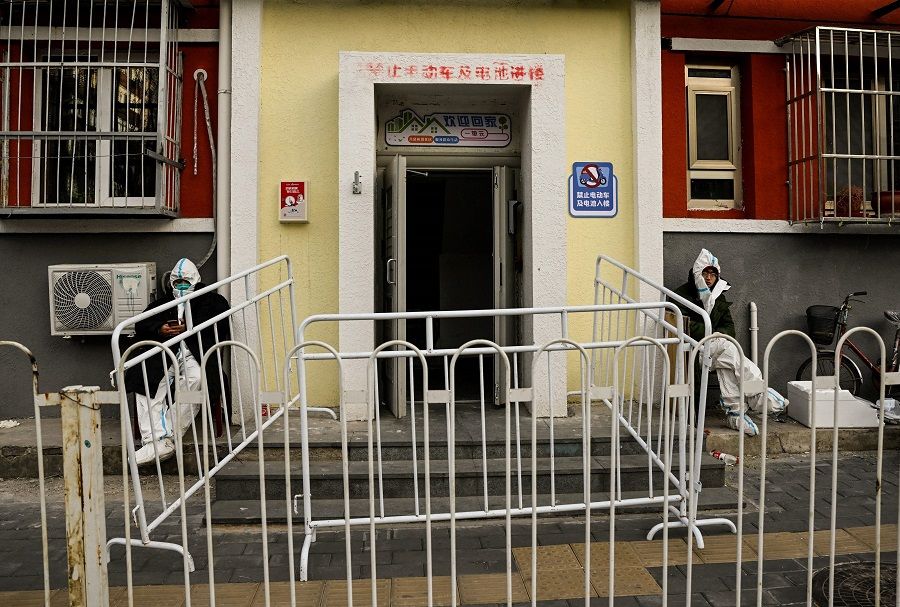
Since late November, many residential communities in Beijing had been placed under snap lockdowns for three to five days as the capital city battled its worst ever outbreak.
"We must fight for our right to a normal life," said Zhang, who joined neighbours to challenge the committee's decision.
... community committees do not have the legal right to issue lockdown orders because they are not government agencies...
Residents of Zhang's community gathered at the main gate before the lockdown order took effect that evening and engaged in a two-hour negotiation with community workers and officials. An agreement was eventually reached to unlock the community, although residents were encouraged to spend the coming weekend at home. The outcome was deemed satisfactory by both sides.
Video clips of the negotiation quickly went viral online and inspired more residents in Beijing and other cities to demand their communities be freed, citing the central government's 20-point easing policy that forbade expansive lockdowns.
Several legal experts told Caixin that it is clear community committees do not have the legal right to issue lockdown orders because they are not government agencies, although many of them have done so since October as infections spread across China.
However, in light of the rapid changes over recent days, snap lockdowns could be a thing of the past. The question now is how effectively self-isolation will be managed.
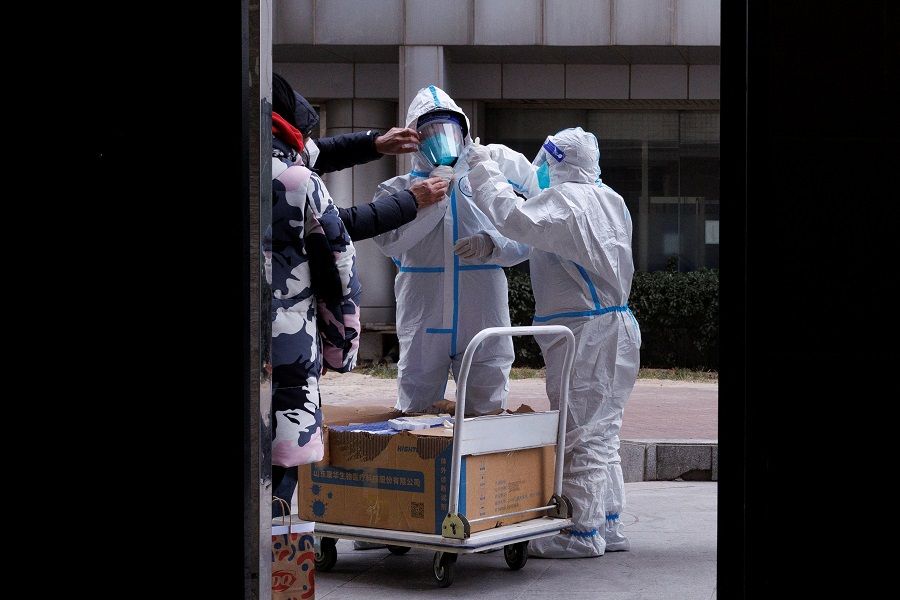
Although there are challenges in the implementation of home quarantine, the infection risks should not be exaggerated, said University of Hong Kong's Jin.
"Scientific guidelines should be provided for everyone to follow with a clear accountability mechanism, as there have been many examples that even couples in the same room didn't infect each other," said Jin, citing the experience in Hong Kong, where home isolation has been widely adopted after the worst outbreaks hit in the spring.
One resident in Beijing agreed. "I think it is more important to eliminate the irrational fear of being infected, and at the same time learn how to reduce the risk of cross-infection," Ma Qiao, who has studied preventative medicine, told Caixin.
Vaccination drive rebooted
A comprehensive vaccine strategy is also seen as crucial for China to emerge from lockdowns without causing a flood of infections.
The vaccination rate among the elderly remains lower than that of the national level, with 76.6% of seniors over 80 years old having received at least one dose and 65.8% two doses, government data showed as of 28 November. The numbers for those over 60 stood at 90.68% for one shot and 86.42% for two.
Caixin learned from multiple sources that authorities have set a vaccination target of 90% for people over 80 years old to have at least one dose by the end of January 2023. Among seniors aged 60 to 79, the inoculation target is 95% of those eligible to either complete the primary course of the first two doses or to get the booster shot if they're already fully vaccinated.
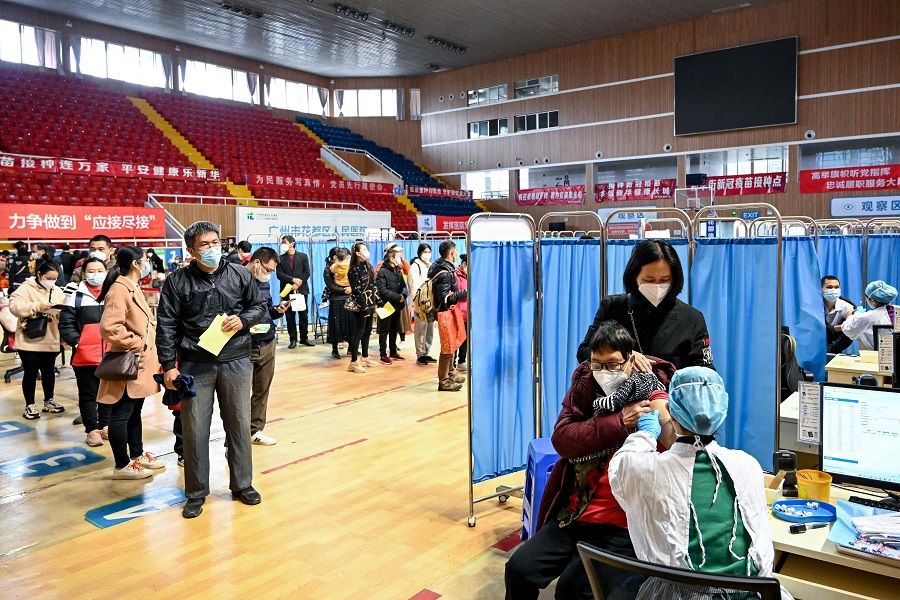
Resuming the vaccination campaign, which had been virtually brought to a halt this year as efforts focused mainly on using lockdowns, mobility controls and mass testing to keep the spread of the virus in check, is a clear signal that the government is shifting its pandemic priorities.
The key constraint on China's medical system is the lack of beds in intensive care units.
It is also time to reassess the severity of Covid-19 in China's disease control system, said Xu Yucai, a former deputy head of the Shanyang county public health bureau in Shaanxi. Since the beginning of the pandemic, China has categorised Covid-19 as a Class B infectious disease, but with management standards equivalent to more lethal Class A diseases such as H5N1 and SARS.
Scientific studies worldwide have proved that there is no need to treat Covid-19 as a Class A disease anymore, and this is the root of many of the current problems, said Xu.
As control measures relax, China's medical system is preparing for a tough battle in the coming months as infections will most likely soar, an infectious disease doctor told Caixin. Reducing the response level of the disease will also allow hospitals to more efficiently allocate medical resources to those in need, said the doctor.
The key constraint on China's medical system is the lack of beds in intensive care units. A 2020 study by the OECD showed that China has 3.6 ICU beds for every 100,000 people, compared with 11.4 in Singapore and 25.8 in the US.
"We should understand 'zero Covid' as 'zero deaths' rather than 'zero infections'." - Lu Jiahai, senior expert at National Medical Products Administration
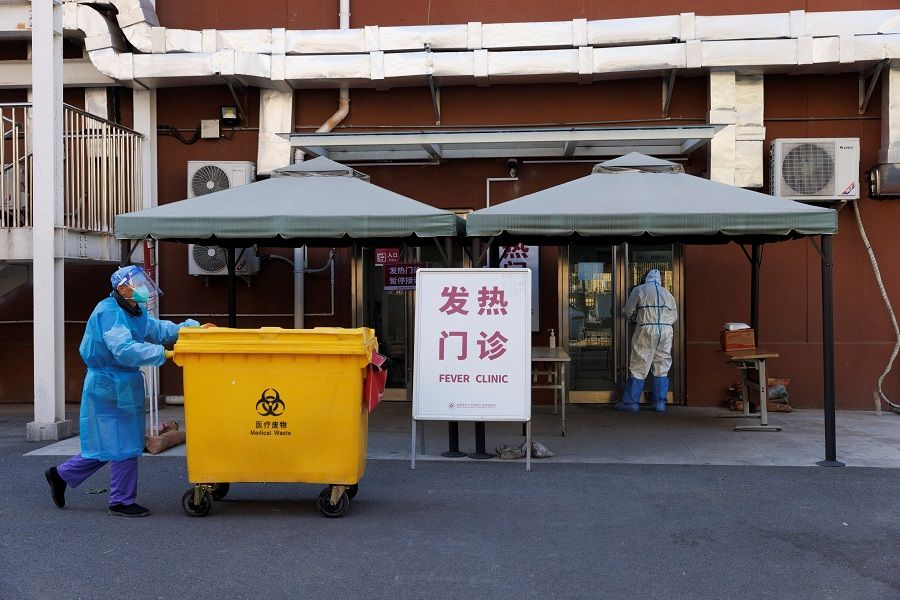
In 2021, the central government set a target to increase ICU beds to 10% of all hospital beds in major cities from less than 3%. Caixin has learned that the target has yet to be met, although many hospitals have expanded their ICUs over the past year.
For China to fully reopen, it must speed up the strategic shift to focus on vaccines, Covid-19 treatments and other medical resources, said the NMPA's Lu.
"We should understand 'zero Covid' as 'zero deaths' rather than 'zero infections'," said Lu. Only by changing the goals can we truly turn the tide of the battle and win the war, Lu said.
(The names of residents in Beijing and Guangzhou quoted in the article are pseudonyms.)
Zhou Xinda and Chen Xi contributed to the story.
This article was first published by Caixin Global as "Cover Story: China's 'Zero-Covid' Looks Done. So, What to Expect Next?". Caixin Global is one of the most respected sources for macroeconomic, financial and business news and information about China.
